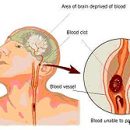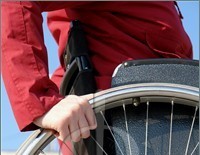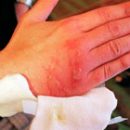Epilepsy is one of the most common neuropsychiatric diseases. What you need to know about this disease and first aid in the seizures of the patients themselves and their relatives?
Content
What is epilepsy?
Epilepsy seizures are of different types, but the basis of any of them is an anomalous and very high electrical activity of brain nerve cells, due to which the discharge occurs.
In this case, three exodus are possible:
- discharge may stop within its borders;
- It can spread to neighboring brain departments and stop, having met resistance;
- It can spread to the entire nervous system and only then stop.
The seizures arising in the first two cases are called partial (partial), in the last case talking about a generalized seizure. In generalized seizures, consciousness is always broken, whereas with partial it is sometimes lost, and sometimes persisted. For epilepsy seizures, the terms also often use «Causes», «attacks», «Episodes».
Epilepsy is known from ancient times. Epileptic seizures were celebrated in many outstanding people, such as Apostle Paul and Buddha, Julius Caesar and Napoleon, Handel and Dante, Van Gogh and Nobel.
How often epilepsy is found?
The true number of patients with epilepsy is difficult to establish, as many patients do not know about their illness or hide it. In the United States, according to the latest research, epilepsy suffer from at least 4 million. man, and its prevalence reaches 15–20 cases per 1000 people.
In addition, approximately 50 out of 1000 children, at least once there were a seizure when increasing temperature. In other countries, these indicators are probably about the same, 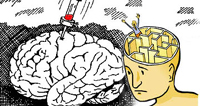 Since the incidence does not depend on gender, race, socio-economic status or place of residence. The radical method of treatment of epilepsy does not exist, but at present, with the help of drugs, it is possible to stop the seizures of sections in 60–80% of cases. The disease rarely leads to death, gross violation of the physical condition or mental abilities of the patient.
Since the incidence does not depend on gender, race, socio-economic status or place of residence. The radical method of treatment of epilepsy does not exist, but at present, with the help of drugs, it is possible to stop the seizures of sections in 60–80% of cases. The disease rarely leads to death, gross violation of the physical condition or mental abilities of the patient.
Causes of epilepsy
Although the seizures may be observed in many diseases and, thus, may be associated with them, the true cause of epilepsy is unknown. Studies show that this disease occurs when a certain brain zone is damaged, but finally not destroyed. The victims, but the preserved vitality of the cells serve as a source of unnecessary electrical discharges, and therefore the seizures. Sometimes during the seizure there is a new brain damage, near or away from the previous. So form additional epileptic foci.
It is still unknown why the same disease in one patient is accompanied by seizures, and another – No. Even more mysteriously, the fact that some people who have undergone a fit, he is not repeated in the future, and others have frequent repeated seizures. It is likely to have a genetic predisposition, however, the type of inheritance is not clearly established. Apparently, epilepsy causes a combination of hereditary factors and environmental influences, including transferred diseases.
Types of epilepsy
Epilepsy is classified by its origin and type of seizures. By origin, two main types are isolated: idiopathic epilepsy, in which the reason to identify fails, and symptomatic epilepsy associated with a certain organic brain damage. About 50–75% of cases there are idiopathic epilepsy.
For diagnostics, the electroencephalogram (EEG) is very important, which allows to identify the painful electrical activity of the brain, as well as determine the localization of the focus of this activity (epileptic focus) and its distribution degree. However, not all patients with epilepsy EEG is changed, so that its normal picture does not exclude this disease.
It is important to accurately set the type of seizure, because treatment depends on it. In some patients there are seizures of different types, which requires a combination of drugs. Every person who suffered an epileptic seizure must necessarily consult a doctor.
Large (generalized) convulsive seizures. This type of seizures are traditionally denoted by the French Grand Mal term (which is translated as a large seizure). It is characterized by severe convulsions. The seizure is usually preceded by the long period (the period of precursors), which is ongoing from several hours to several days. At this time, irritability appear, increased excitability, decrease in appetite or change behavior.
Immediately in front of the seizure in some patients there are aura – The state of the harbinger, the manifestations of which vary from different patients from repeating each time nauseous or twitching muscles to the feeling of an inexpressible delight. At the beginning of the seizure man can make screams or other sounds. He loses consciousness, falls on the floor, his body is strained, breathing slows down, the face becomes gray, blue or pale.
Then arise twitching in the hands, legs or in the whole body. Pupils expand, blood pressure rises, the face is poured with blood, the skin is covered later, saliva is distinguished from the mouth. Often occurs involuntary urine and feces. Possible bite of language or cheeks. The muscles are then relaxed, breathing becomes deep, the convulsions subsided. Consciousness returns through Drema. Sleepiness and confusion of consciousness are sometimes persisted during the day. Generalized seizures can appear in different ways: sometimes only one of the described phases is observed, sometimes their sequence changes.
The memory of the generalized seizure is absent, sometimes the patient remembers only aura. Headache, confusion of consciousness, pain in the whole body and other symptoms can be associated with a fall during a seizure, severe muscular 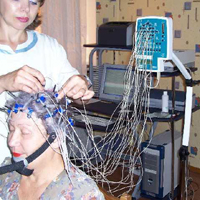 spasm or bruises due to involuntary movements. Seizures usually continue from a few seconds to several minutes and run spontaneously.
spasm or bruises due to involuntary movements. Seizures usually continue from a few seconds to several minutes and run spontaneously.
Frebel convulsions Usually represent a type of generalized seal and occur in children at high temperatures, most often aged 6 months to 4 years. Many of these children have relatives who suffered in childhood the same attacks. Since in most cases 1-2 such episodes are observed, which are in the future do not develop into a true epilepsy, some experts do not include febrile cramps for epilepsy.
Focal (partial) seizures. Only some part of the body are involved in them; The seizures can be motor (motor) or sensitive (sensory) and manifest itself with convulsions, paralyams or other painful sensations. Term «Jackson epilepsy» refers to the seizures of the tendency to move («march») from one part of the body to another; Sometimes such a fit is generalized and applies to the whole body. After the convulsion of the limb in it, weakness may be maintained (paresis). The emergence of aura, loss of consciousness and drowsiness after the seizure is not always noted.
At the same time, the type of seizures often, especially in adults, detect the organic brain defeat, so that patients should be as soon as possible to seek medical care.
Psychomotor seizures characterized by a combination of mental and motor disorders. Typical start – Promotional period and aura with the emergence of an unusual taste, smell or a feeling of already seen (dejavu - as if he had seen something from what was happening), after which the patient loses contact with the surrounding reality.
During the seizure, chewing, laughter or smile, licking lips, the patient can jerk, sort out clothes. Movements are usually coordinated, but repeated and stereotypical; the patient does not perceive others. In many cases, the seizures are manifested only by long periods of fear, the sensations of the unreality of what is happening, hallucinations, a rough condition. Memories of the attack are often absent. Psychomotor seizures are most often associated with an epileptic focus in the temporal share of the brain.
Absans (small seizures). Absans – Special type of seizures of usually unknown origin. Their historically established name «Small seizures», Or Mal does not cover all types of small seizures. Absans usually arise at school age and manifest a short-term loss of consciousness. The child suddenly stops any activity, the face freezes, as if he fell asleep on the go, the look becomes meaningless, stronger in one point. Hence the term «Absan» (Absence, Franz. - «absence»).
Absanus continues from 5 to 25 seconds. Immediately after the seizure, the child returns to the interrupted activity, as if nothing happened. Often, such seizures remain unnoticed while due to repeating attacks there will be no injection or confusion. As a rule, this type of epilepsy is well amenable to treatment with antiepileptic drugs. Absans usually stop by 20 years.
Small motor seas. There are three types of similar seizures. Akinitic seizures, or drop attacks (from English. Drop – fall) are characterized by a sudden omission of the head or fall (as if a person suddenly «Disabled» Or him suddenly swung forward). Myoclonic seizures accompanied by short-term twitching, as it happens in healthy people with awakening or falling asleep. Infant spasms (Infant myoclonium, or salaamos convulsions) are characterized by lightning barters arising in early childhood, usually up to one and a half years.
As a rule, small motor seizures continue for a few seconds, sometimes followed by groups one by one, often replaced by crying. Small motor seizures are poorly treatable and are often associated with residual (residual) or progressive brain damage.
Epileptic status - a condition in which the seizure continues for hours without a break or the attacks follow each other, and in the interval between them the consciousness is not completely restored. Although status may be associated with any type of seizures, the threat of life occurs only in generalized convulsions and respiratory disorders.
Mortality for epileptic status reaches 5–fifteen%. If it is delayed, in more than 50% of cases, secondary brain damage occurs capable of leading to dementia. In view of this threat, a patient with long-term convulsions is necessary emergency medical care.

